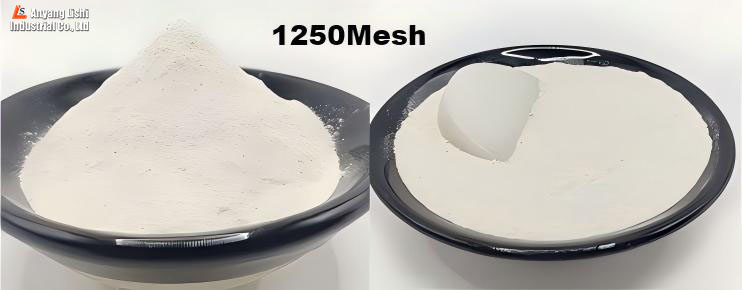Soda feldspar (NaAlSi?O?), a naturally occurring tectosilicate mineral, is increasingly valued in modern industrial anti-corrosion applications, where coating performance directly impacts equipment lifespan, safety, and maintenance costs. For decades, titanium dioxide (TiO?) has been the standard pigment in protective coatings, prized for its high refractive index, excellent hiding power, and bright whiteness. It not only enhances appearance but also reflects UV radiation, slowing down resin degradation.
However, titanium dioxide is not without drawbacks. It is one of the most expensive raw materials in coatings, and under prolonged UV exposure, TiO? can trigger photocatalytic reactions that generate free radicals, accelerating resin breakdown and compromising long-term durability. Additionally, as a spherical particle, TiO? contributes little to barrier properties or mechanical strength.
In contrast, soda feldspar, after fine processing, offers distinct advantages as a functional filler. It improves coating density and barrier performance, enhances mechanical strength, and provides cost efficiency—making it a highly competitive alternative for cost-sensitive or highly corrosive environments.

Core Advantages of Soda Feldspar: Building an Effective Corrosion Barrier
The most significant feature of soda feldspar is its platelet-like crystal structure. When uniformly dispersed in the coating matrix, these “micron-scale flakes” align parallel to the substrate, creating a “l(fā)abyrinth” barrier that dramatically extends the diffusion path for corrosive agents such as moisture, oxygen, and chloride ions. This significantly enhances the coating’s shielding effect and corrosion resistance.
Moreover, soda feldspar is chemically inert, resistant to acids, alkalis, and high temperatures, ensuring long-term stability. Its high hardness also improves the coating’s abrasion and impact resistance, making it suitable for high-wear environments.
In terms of application performance, finely ground soda feldspar (D50 = 3μm) exhibits excellent suspension and dispersion, reducing coating viscosity by 15–20% and sedimentation to less than 0.5%, improving workability. In high-temperature cured coatings, its relatively low melting point (~1150°C) helps reduce sintering temperatures by 50°C, increasing coating density by 25% and cutting energy consumption by 15%.

Synergy, Not Replacement: Optimizing Performance and Cost
The future lies not in replacing titanium dioxide entirely, but in creating a synergistic relationship between the two materials. In practical formulations, titanium dioxide ensures superior opacity, whiteness, and UV stability for aesthetic and weathering performance, while soda feldspar acts as a functional filler, enhancing physical barrier properties, mechanical strength, and cost efficiency.
Through optimized formulation, a balanced performance-to-cost ratio can be achieved: high-end systems may retain a higher proportion of TiO?, supplemented by feldspar for enhanced protection; in cost-sensitive or highly corrosive environments, increasing the feldspar content offers an effective compromise between performance and economy.
About LSFerroalloy
Established in 1999, LSFerroalloy owns dedicated feldspar mines and operates a fully integrated production system covering mining, mineral processing, and advanced powder manufacturing. This ensures consistent product quality and reliable supply. Supported by a comprehensive logistics network, LSFerroalloy efficiently serves global customers, providing high-value sodium feldspar, nepheline syenite, and potassium feldspar products for the ceramics, glass, and coatings industries.
For specific coating applications—such as marine engineering or industrial storage tanks—LSFerroalloy offers customized product recommendations and technical solutions to enhance coating performance and market competitiveness.
